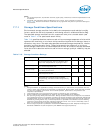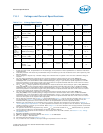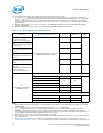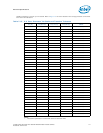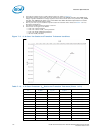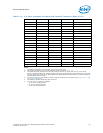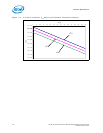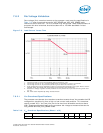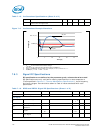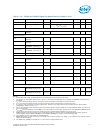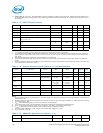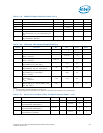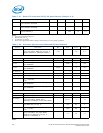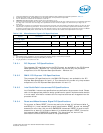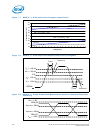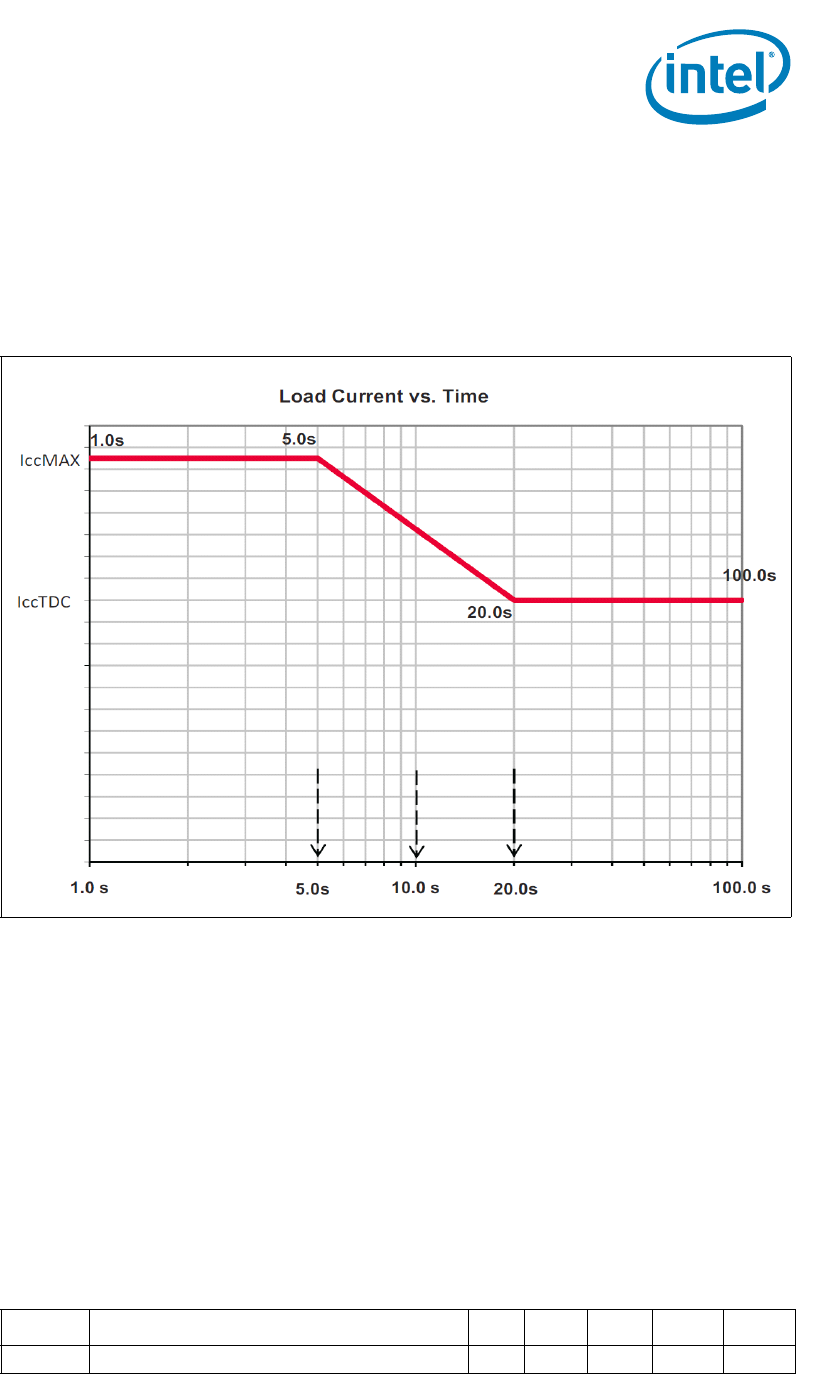
Intel® Xeon® Processor E5-1600/E5-2600/E5-4600 Product Families 175
Datasheet Volume One
7.8.2 Die Voltage Validation
Core voltage (V
CC
) overshoot events at the processor must meet the specifications in
Table 7-15 when measured across the VCC_SENSE and VSS_VCC_SENSE lands.
Overshoot events that are < 10 ns in duration may be ignored. These measurements of
processor die level overshoot should be taken with a 100 MHz bandwidth limited
oscilloscope.
Notes:
1. The peak current for any 5 second sample does not exceed Icc_max.
2. The average current for
any 10 second sample does not exceed the Y value at 10 seconds.
3. The average current for
any 20 second period or greater does not exceed Icc_tdc.
4. Turbo performance may be impacted by failing to meet durations specified in this graph. Ensure that the
platform design can handle peak and average current based on the specification.
5. Processor or voltage regulator thermal protection circuitry should not trip for load currents greater than
I
CC_TDC
.
6. Not 100% tested. Specified by design characterization.
7.8.2.1 V
CC
Overshoot Specifications
The processor can tolerate short transient overshoot events where V
CC
exceeds the VID
voltage when transitioning from a high-to-low current load condition. This overshoot
cannot exceed VID + V
OS_MAX
(V
OS_MAX
is the maximum allowable overshoot above
VID). These specifications apply to the processor die voltage as measured across the
VCC_SENSE and VSS_VCC_SENSE lands.
Figure 7-5. Load Current Versus Time
Table 7-15. V
CC
Overshoot Specifications (Sheet 1 of 2)
Symbol Parameter Min Max Units Figure Notes
V
OS_MAX
Magnitude of V
CC
overshoot above VID 65 mV 7-6



